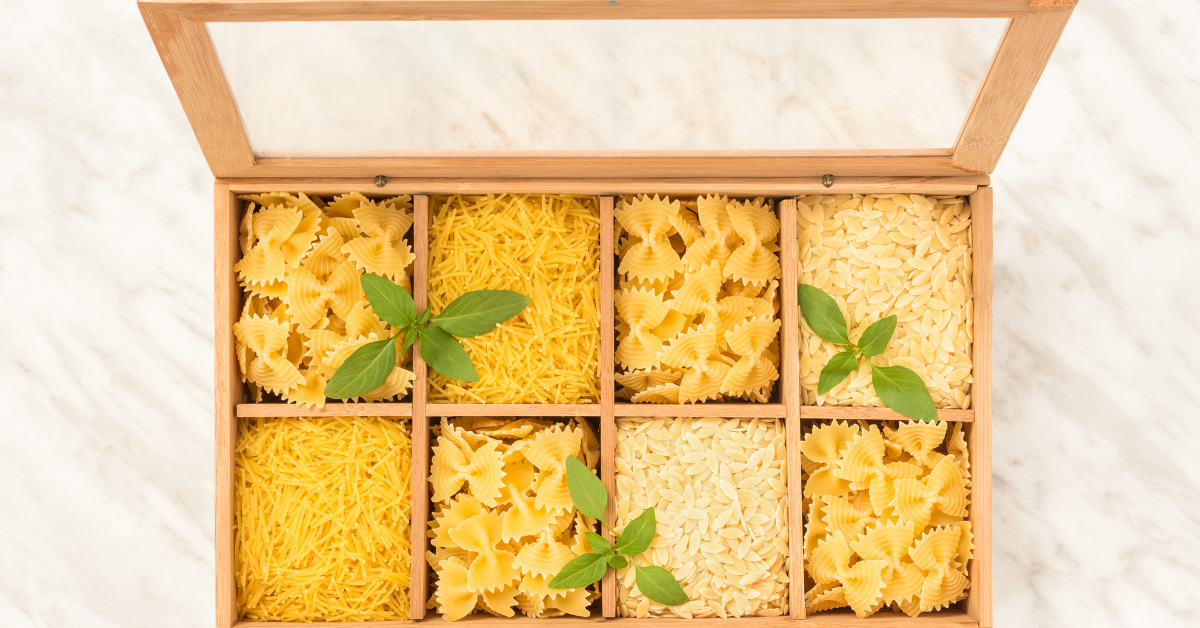Beginning blacksmithing is not some archaic, outdated art form. To this day, there is an entire community of individuals who are becoming interested in learning to blacksmith. As such, there are all kinds of learning to blacksmith classes and mentors who can teach you how to start blacksmithing.
Keep reading if you are interested in learning more about the history of blacksmithing, and how to get started with the hands-on and creative hobby of learning to blacksmith.
What Is Blacksmithing?

Blacksmithing is the art of forging raw metals, like iron and steel, into objects. Blacksmithing relies on essential tools of the trade, like a forge, hammer, and anvil, to bend, shape and hammer the raw material into the desired shape.
A blacksmith,also known as a smith, uses metal forging techniques and tools to create a variety of functional objects and tools. Blacksmiths are capable of making a wide array of metal-forged implements:
- Furniture
- Weapons—such as swords, daggers, and knives
- Gates, grills, and railings
- Cooking utensils
- Agricultural equipment—sickles and plowshares
- Hardware and fasteners—nails, screws, and bolts
- Shields and armor
A Short History of Blacksmithing
Blacksmithing has been going on for millennia. Before the use of iron, bronze was the predominant raw material that blacksmiths used to create weapons and other objects. Then, after the discovery of iron, blacksmiths focused their expertise on mastering the new properties of stronger and more reliable iron ore.
Before the Industrial Revolution, blacksmiths were responsible for making all of the wrought iron objects used in the world. At the time, blacksmiths did everything by hand, utilizing a selection of essential tools. For example, blacksmiths were predominantly responsible for making horseshoes.
A blacksmith’s basic tools consisted of a forge or furnace, which heated up and melted the raw iron to make it easier to work with. They would then work the heated metal on a steel-surfaced block known as an anvil, using tongs to hold the burning hot piece of metal, and a hammer to bend the metal into the desired shape.
After the Industrial Revolution, the necessity for blacksmiths and their ironworks rapidly disappeared. This was because more and more objects that were formerly made by hand were being made in factories by machines and relatively inexpensive casting processes.
Nevertheless, blacksmithing still exists today, largely due to a resurgence in the 1970s. Because of this resurgence, one that focused on the value of craftsmanship and personal touch, blacksmithing is still a viable profession.
However, blacksmiths are no longer seen as workhorses responsible for performing manual labor and churning out handmade objects and implements. Instead, they are seen as artists whose skills deserve the utmost respect.
Blacksmithing is also a popular casual hobby for individuals who enjoy working with their hands and creating iron- or steel-forged objects, tools, and other implements.
Benefits of Learning Blacksmithing

Both professional and hobbyist blacksmiths get to reap the benefits of their trade.
-
Creative outlet – Blacksmithing is an incredibly creative skill. As a blacksmith, you can create a wide range of objects, from fire pokers to custom furniture.
-
Good income and flexible hours – For some individuals, blacksmithing is still a viable career. In most cases, blacksmiths work at their own pace and set their own schedule.
In addition, blacksmiths who create custom artwork tend to be in control of their prices. Typically, their customers are willing to pay more, knowing that they are getting a 100% custom and handmade piece of art.
-
Stress reduction – Studies have shown that participating in hobbies can help you reduce stress. For example, one study showed that 75% of people who created art as a hobby had lowered cortisol levels, one of the most common hormones related to stress.
Beginning Blacksmithing Tool List
You need to invest in some new equipment for most new hobbies if you want to take the hobby seriously. This is true for beginning blacksmithing as well. Keep reading for a complete blacksmithing tool list.
Forge or Furnace
To shape metal material, you must heat it up. That is where the forge or furnace comes into play. A forge consists of three parts: a firepot, a work surface, and a blower.
A firepot is where the forge holds fire. Typically, fire pots are made from specialized materials like fire bricks. The work surface of the forge is where you, well, work, and keep your materials. Finally, the forge's blower feeds oxygen to the fire to keep it hot.
Anvil
Over the years, anvils have been made from various materials such as stone, bronze, and wrought iron. However, steel has become the ideal material for beginner and expert blacksmiths.
Forged steel anvils are considered to be the most effective anvils. This is because steel anvils have the bestface rebound. However, they are the most expensive, compared with other types of anvils.
The anvil size needs to be appropriate for the size of the material being forged and the tools being used to shape the material. Similarly, the weight of the anvil is important. In most cases, the heavier the anvil, the easier it is to use.
There are five critical parts of a blacksmith's anvil:
-
The face – Located on top, this is the surface that acts as a stable base for striking the metal.
-
The horn – This is the cone-like end that is considered to be the front of the anvil. It gets its name because it looks like a bull’s horn. The horn is used to bend and curve metal into rounded shapes.
-
The table – Also known as the step of the anvil, this is the flat surface located between the horn and the face of the anvil. The table’s height is slightly lower than the rest of the face. This makes the table of the anvil an ideal location for cutting pieces of metal.
-
The hardie hole – Located inside the face of the anvil, opposite the horn, this area is also known as the heel of the anvil. The hardie hole has a square-shaped mouth and is used to hold tools like chisels and swages. The hardie hole helps bend metal pieces and is sometimes used for punching holes.
-
The pritchel hole – The pritchel hole plays a similar role to the hardie hole, except that the mouth of the pritchel hole is rounded. This makes the pritchel hole the ideal location for punching rounded holes into a workpiece, such as a horseshoe.
How to Start Blacksmithing: Selecting the Right Hammer

You cannot learn how to start blacksmithing without a blacksmith hammer. We recommend a basic ball pein or cross pein hammer to get started. In most places, you can find good hammers at your local hardware store.
Eventually, as your skills develop, you can create your own blacksmith hammer and other helpful equipment.
Choosing the Right Blacksmith’s Vise
The blacksmith’s vise, also known as a post vise, is an essential tool. Post vises are sturdy and designed to stand up to the constant hammering during blacksmithing. Typically, the larger the vise, the better. Smaller vises can be damaged and do not hold up well to the beating they take during long forging sessions.
High-quality post vises can be difficult to find. However, farm auctions and estate sales can be good places to start looking. And remember, you want a post vise with smooth jaws so that the vise cannot damage the metal you are working on.
Mastering the Use of Blacksmithing Tongs
For starters, you will need one or two pairs of blacksmithing tongs. In most places, you can purchase beginner blacksmithing tongs for between $30 and $40.
You will undoubtedly invest in more blacksmithing tongs as you become a more adept blacksmith. Over time, expert blacksmiths keep one or two tongs for each thickness of metal that they work with. Specific tongs for each type of metal you work with make it easier to grip your metal and produce work you can be proud of.
Expanding Your Blacksmithing Tool List with Advanced Tools
As your beginner blacksmithing hobby grows and you create more advanced objects and implements, you may need to invest in additional tools.
Expert blacksmiths frequently use advanced tools to help them create masterful pieces of artwork and functional objects, such as:
- Chisels
- Twisting tools
- Center punches
- Drifts
- Slitters
Incorporating Modern Technology into Blacksmithing
As you develop your blacksmithing skills, you may want to consider integrating modern technology into your practice. Today, there are various advanced tools and equipment that can help you refine your techniques and create even more intricate designs. Some of these modern technologies include:
- Power Hammers: Power hammers are motorized machines that deliver consistent, high-impact blows to the metal, making it easier to shape and form. These machines can significantly speed up your work process, allowing you to create more complex pieces in less time.
- Hydraulic Presses: A hydraulic press is a powerful machine that uses hydraulic pressure to compress and manipulate metal. This tool can be especially helpful when working with larger, thicker pieces of metal that may be challenging to shape using traditional hand tools.
- Plasma Cutters: Plasma cutters are modern tools that use a high-temperature plasma jet to cut through metal with precision and speed. These cutters can make clean, accurate cuts in various metals, making them valuable tools for blacksmiths looking to create intricate designs or detailed components.
- Welding Equipment: Modern welding equipment can help blacksmiths join pieces of metal together with precision and strength. By mastering welding techniques, you can expand the range of projects you can take on and improve the quality of your work.
- CAD Software: Computer-aided design (CAD) software allows blacksmiths to create detailed, accurate blueprints and 3D models of their projects before starting the forging process. With CAD software, you can plan out your designs and make adjustments before you start working with the metal, reducing the likelihood of mistakes and saving time and resources.
By incorporating modern technology into your blacksmithing practice, you can enhance your skills, improve the quality of your work, and explore new creative possibilities. These tools can also help you work more efficiently, allowing you to take on larger or more complex projects and expand your blacksmithing horizons.
Staying Safe While Learning to Blacksmith

Blacksmithing can be a dangerous hobby. Between the heavy equipment, fire, and chemicals you may utilize while blacksmithing,you could be at risk of injury. That is why it’s important to take safety precautions. If you have the foresight to have a72-hour kitprepped in case of emergency, then these additional safety precautions should make sense.
Common Beginner Blacksmith Accidents and Injuries
Like most new hobbies, there are common accidents and injuries that come with the territory of learning a new skill. Some are relatively common and will inevitably happen as you partake in beginning blacksmithing.
However, other accidents and injuries, particularly fatal ones, should be avoided at all costs.
- Joint injuries from lifting, raising, and moving heavy tools and equipment
- Burns, ranging from mild superficial burns to more severe second- and third-degree burns
- Damage to the eyes from flying sparks, metal wires, or hot metals.
- Smoke and poisonous chemical-related injuries
- Hearing loss and damage due to loud noises and machinery
- Heat stroke, heat rash, and dehydration
- Lung damage and inhalation-related injuries
- Cuts and lesions to the hands and arms
The Benefits of Learning Blacksmithing From a Professional
Starting to blacksmith upon a foundation of solid and safe blacksmithing habits will help ensure your new hobby remains as safe as possible.
One of the best things you can do to keep yourself safe while blacksmithing is to start learning from a professional. Learning from a professional blacksmith who can teach you good practices is a worthwhile investment. Depending on where you live, there may be a class you can sign up for today.
Essential Personal Protective Equipment for Your Blacksmithing Tool List
Appropriate safety equipment is vital for blacksmithing. The personal protective equipment (PPE) you utilize while blacksmithing must target the common accidents and injuries you might experience.
- Safety goggles or face shields protect your eyes from flying sparks, metal wires, and hot metals.
- Earplugs protect your ears from repetitive and loud noises.
- Respirators defend your lungs from noxious gasses and fumes.
- Heavy-duty work gloves protect your hands from sharp objects, hot tools, and hammering.
- Steel-toed work boots protect your feet if a heavy object is dropped or knocked over.
- Durable work clothing (long-sleeved shirts and long pants) protect your skin.
Besides wearing the proper clothing and PPE to keep you safe, there are other safety precautions you can take to keep blacksmithing safe.
Additional Safety Precautions for Blacksmithing
- Ensure your workspace has properventilation to prevent smoke and toxic gas poisoning.
- Install asmoke and carbon monoxide detector in your workshop.
- Do not keep flammable liquids or materials close to your furnace, such as petrol or diesel.
- Avoid wearing synthetic clothing while you blacksmith. Instead, considernatural materials like thick cotton and denim.
- Know where yourclosest fire department is located and how to reach them in an emergency.
- Always have afire extinguisher conveniently located.
- Use good posture while blacksmithing and stretch your body after work.
- Never blacksmith in an enclosed space.
-
Always have arunning water source close by to soothe burns, quench metal objects, and put out fires.
Joining a Blacksmithing Community
As you embark on your journey learning to blacksmith, consider joining a local blacksmithing community or online forum. This will allow you to connect with other blacksmiths, share tips and tricks, and gain valuable advice from experienced practitioners. Participating in a community can provide support, encouragement, and opportunities to collaborate on projects, helping you grow and improve in your newfound craft.
Final Thoughts on How To Start Blacksmithing
Contrary to popular belief, blacksmithing is not extinct. For many people, blacksmithing is a successful and lucrative career that provides them with a creative outlet. For others, blacksmithing has become a popular hobby, likeurban prepping.
Starting a blacksmithing hobby can help you stay entertained and reduce the stress you may be experiencing from other parts of your life. Plus, blacksmithing teaches you new skills that may come in handy during or after a natural disaster or if SHTF.
For more interesting articles and adisaster preparedness checklist, visit our Practical Prepper Blog. Or, to speak with one of ourfreeze-dried food product experts about foodprepping, visit our website.



